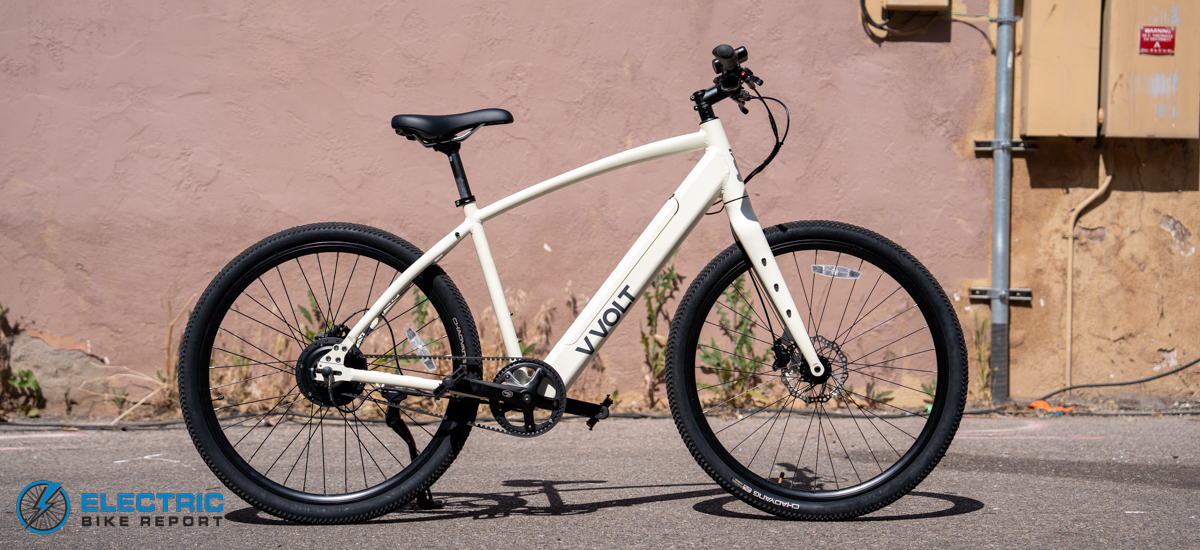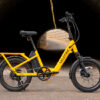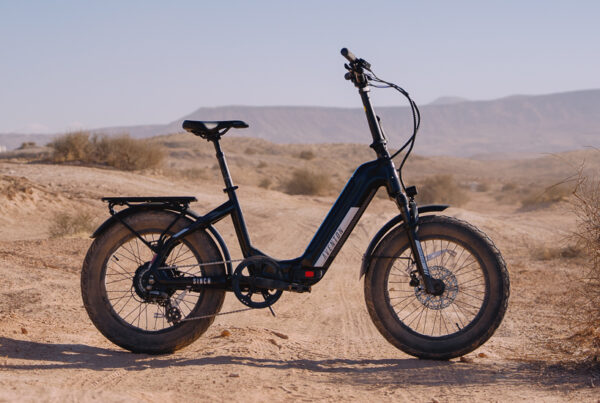As shown in the infographic above, the average speed data we gathered for the Vvolt Alpha in our Speed Test indicates relatively subtle differences between the bike’s five pedal assist system (PAS) settings. We’d prefer to see a more even distribution of power output (and therefore speed) between its PAS settings, which starts at the bike’s controller. But ultimately, five PAS settings felt like too many – three settings with greater differentiation between them would fit the bike’s design intent more closely.
We were pleased to note that with its 43-lb frame, the Alpha was functional as a non-electric bike when pedaled without motor assistance; our average speed of 12.3 mph is certainly on the faster side. In PAS 1, our average speed was almost 15 mph, though on flat and straight roads, I was easily able to reach around 17 mph. Considering Vvolt’s focus on simplicity with the Alpha, I was surprised that it had a full 5 PAS settings, and somewhat puzzled that there did not seem to be much difference in feel between them; the bike seemed to reach 17-19 mph easily but struggled to go beyond it.
With a 36-volt (V), 350-watt (W) motor and a 36V, 375-watt-hour (Wh) battery, we did not expect tremendous speeds from the Alpha, but we did expect the mild level of motor assistance that we experienced during this test. 36V electrical systems supply less power than those of higher voltages (typically 48V), so the Alpha’s motor is limited in the amount of power it can draw from the battery. This is a bike that requires some pedaling, but its PAS makes that task easier.
In terms of wattage output, 350 watts is on the smaller side – but is also common on city bikes in the Alpha’s weight class. As explained in our guide to e-bike batterieswatts are a measure of the amount of work that the motor can perform, so the Alpha’s motor can move riders faster than a 250W motor, but less effectively than a 500W or 750W motor.
An element of the Alpha’s drivetrain – namely its 50T chainring – also seemed limiting. The Alpha required rapid pedaling to overcome a “loose” feeling to its drivetrain above roughly 17 mph, so we’d prefer to see a larger chainring that would help to counteract that and allow riders to pedal more effectively at faster speeds.
On similar single-speed city bikes, we’ve seen larger 63T chainrings perform well, though there is a tradeoff. Hills become more challenging with larger chainrings, and in truth, the Alpha’s setup performed relatively well – but I’ll explain that in more detail in the context of our Hill Test later in this Vvolt Alpha review.
.
.
.
#Vvolt #Alpha #EBike #Review #Electric #Bike #Report
Source link









